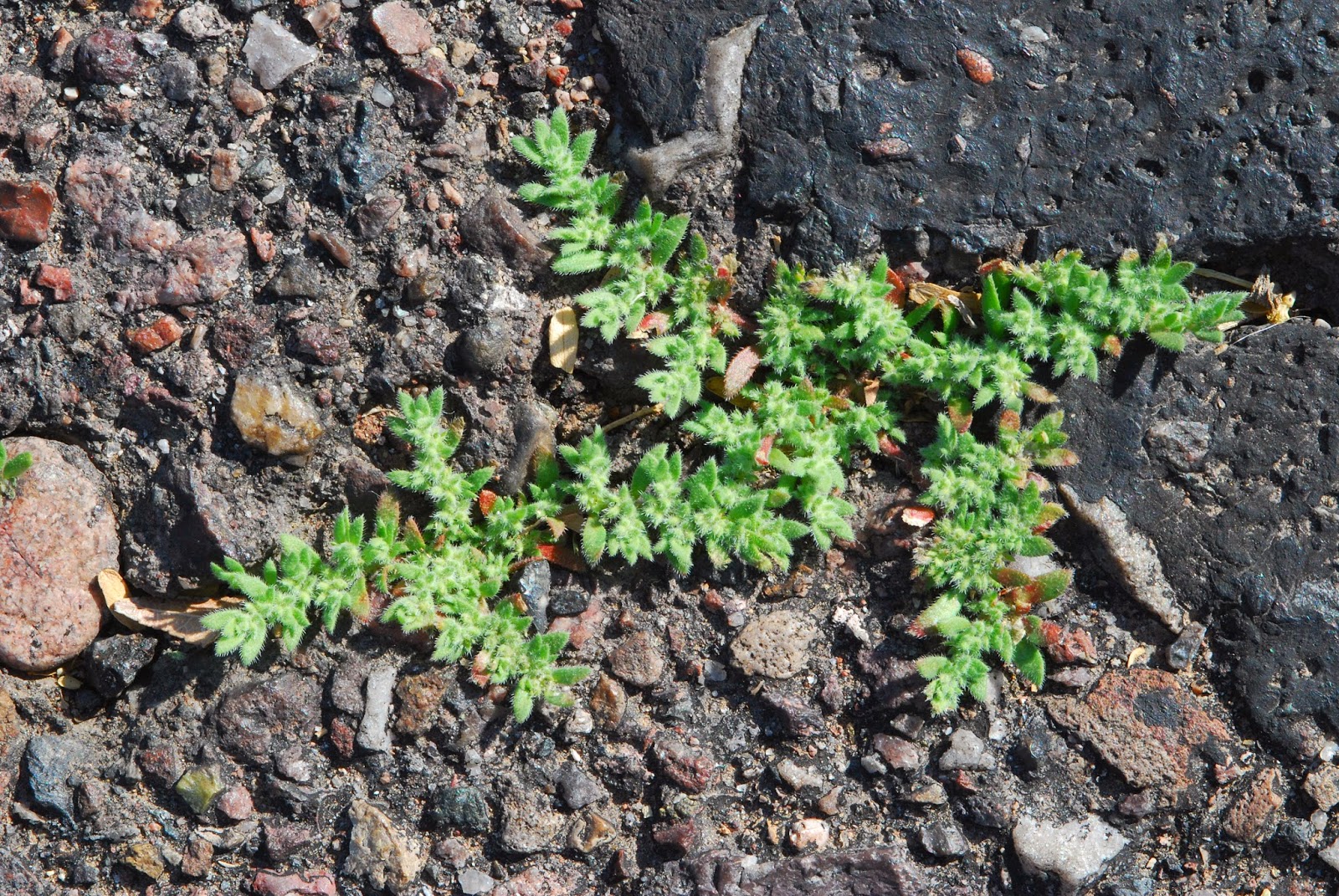When our local grocery store was built six years ago, I was glad that I could now walk just a mile to do my shopping, but grieved a little for another patch of desert that was transformed into seventy-five acres of asphalt and concrete. Fortunately, the other half of this island surrounded by a moat of roadways between Hackamore and Happy Valley Road, still remains for me to wander and to study the natural and unnatural history there. From the air, the desert side shows a maze of trails created by wildlife and the occasional human passing through. The mall side appears to have nothing growing at all, but this is hardly true.
This week I made a comparative floral inventory of the two parcels of land. Creosote bush is the dominant plant on the wild side, with a few mesquites, palo verde and wolfberry shrubs mingling in. Patches of globe mallow (Spaeralcea ambigua) and African chamomile (Oncosiphon piluliferum) flourish wherever there is a little cover from deadfall or a dip in the landscape where soil and water accumulate. Over forty other species of plants seek refuge in the shade of the larger shrubs. A few hardy annuals, especially plantain (Plantago ovata) and burrcomb (Pectocarya recurvata), colonize the wide expanses of otherwise bare earth. Quail, ground squirrels, desert cottontail, white-crowned sparrows and lizards are some of the critters that make a living here too.
Crossing the curbed boundary between the two sides of Hackamore Acres, the diversity of plants and animals that occupy the parking lot are entirely different. Well, obviously. Except for a few token creosotes and triangle leaf bursages, all of the forty-one species that have been selected to live in the sea of asphalt are not found in the wild desert next door. Landscapers do a thorough job of weeding out the few introduced species that have established on the desert side. Even the birds are different. Over in the parking lot and on sidewalks, you're more likely to see house sparrows, pigeons and grackles. This is a distinctly urban ecology. But this is also a miracle! That anything can survive in this radically altered landscape is, in some ways, a testimony to the power and resilience of life.
I've come to appreciate both sides of Hackamore Acres. I admire the trees and shrubs that can survive (albeit with an IV of sorts, water and nutrients provided through a drip system) in the super-heated environment of the parking lot. Emu bush, rosemary, oleander and lantana are year-round sources of nectar, pollen, seeds and leaves for birds and insects to feed on. Willow acacia, if left untended for more than a few months, will sprout many seedlings. Surely they would form a forest in the future if we ceased pruning, weeding and hosing the gravel with herbicides.
I romanticize the wildness of creosote flats that smell so sweet after a rainstorm. Arizona poppies and spiderling that erupt from seemingly barren soils after a good monsoon rain remind me that no matter what abuses we torture the earth with, seeds blown in will restore the land in time. Life is patient.












